-
You can vote for the People’s Choice Award for Nature Photographer of the Year.
-
The Natural History Museum in London has released the images and will put them on display in February.
-
The photos show an elephant kicking trash, a territorial mudskipper, a loving lion family and more.
In a moment of mercy, a turtle was caught letting a dragonfly sit on its face instead of turning it into a crunchy snack.
The Balkan Water Turtle lives throughout Asia and Europe and enjoys a rich diet of whatever is nearby. But according to the Croatian Herpetological Society, they prefer meat, which makes the turtle’s decorum here even friendlier.
“The turtle seemed to enjoy the interaction as they shared a moment of peaceful coexistence amid the murky waters of the swamp,” photographer Tzahi Finkelstein said in the official caption of the photo.
This photo is one of 25 currently being considered as the public’s favorite nature photo of 2023.
It is an offshoot of a larger competition initially judged in October, the Wildlife Photographer of the Year, which was developed and produced by the Natural History Museum in London.
The winners of the audience award will be announced in February 2024 and exhibited in the museum, together with the winners announced earlier this year.
This is just part of the 25 images for the title. If you want to see them all and vote for your favorite, you can do so here. Voting closes on January 31, 2024.
A bear watching the photographer from the side
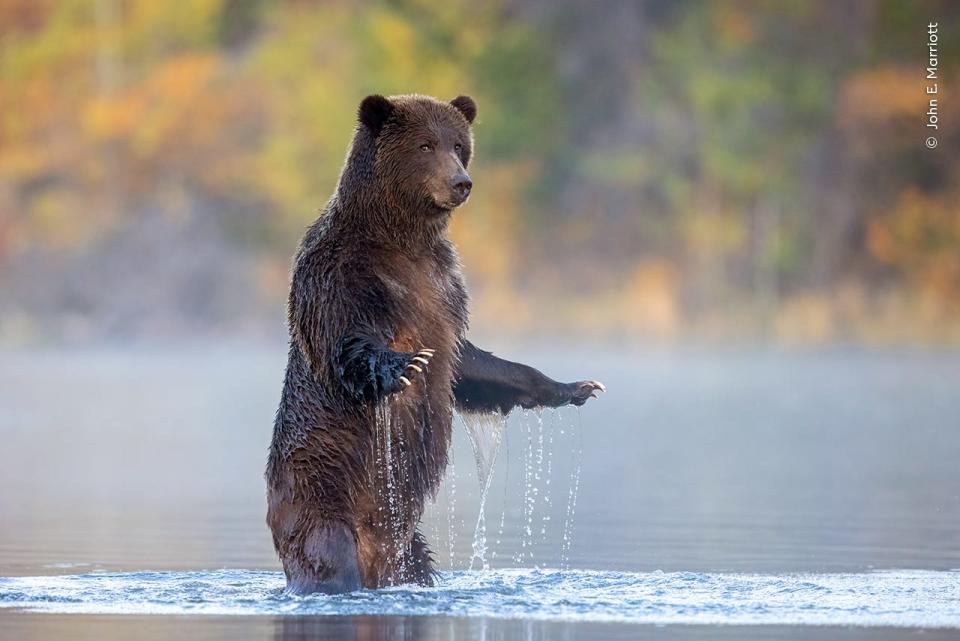

Grizzly bears have made a comeback in North America thanks to conservation efforts that began in the 1970s. Nowadays, people can’t get enough of the cuddly-looking carnivores.
The Chilko River, in British Columbia, Canada, is known for its grizzly bears. Several companies offer tours to the area to view the bears as they feast on the local populations of sockeye salmon.
John Marriott, the photographer who captured this moment, was leading a grizzly photography tour when he came across this bear.
As they approached in their small fishing boat, the official caption reads, the bear looked at them briefly with a questioning look before turning his attention back to the salmon.
A curious lion cub and his watchful mother
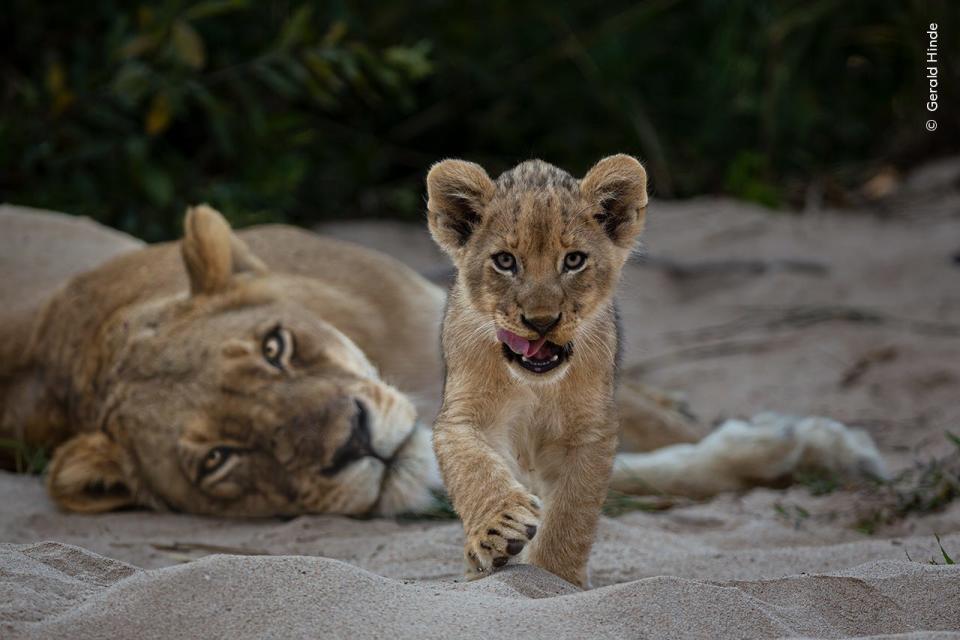

Life on the savannah can be brutal for the king of the jungle, and a baby lion must be wary of predators such as humans, leopards and adult male lions. Therefore, the photo’s official caption says, mother lions usually keep their offspring hidden for about the first six weeks of their lives.
The photo, dubbed “Curiosity” by photographer Gerald Hinde, shows a lion cub approaching a vehicle as its mother watches in South Africa’s Greater Kruger National Park.
Despite everything the animal feared, it approached Hinde. Curiosity doesn’t seem to be limited to domestic cats.
A homecoming for this bat
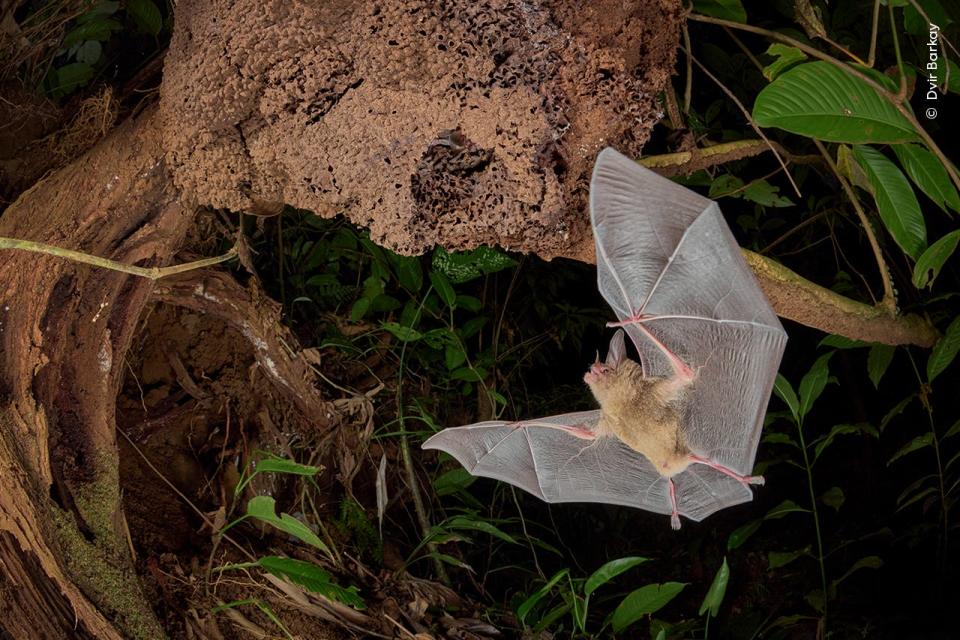

This photo shows the underside of a round-eared pipistrelle bat as it makes its final flap to its home in a termite nest in Costa Rica.
He returns home, where two almost indistinguishable bats poke their heads out of the nest.
This strange-looking nest is not just decorative, it is a unique feature of this species that the photographer, Dvir Barkay, said took years to capture.
The bats make their home in termite nests in Costa Rica by hollowing them out with their teeth, according to the image caption.
A sleepy polar bear
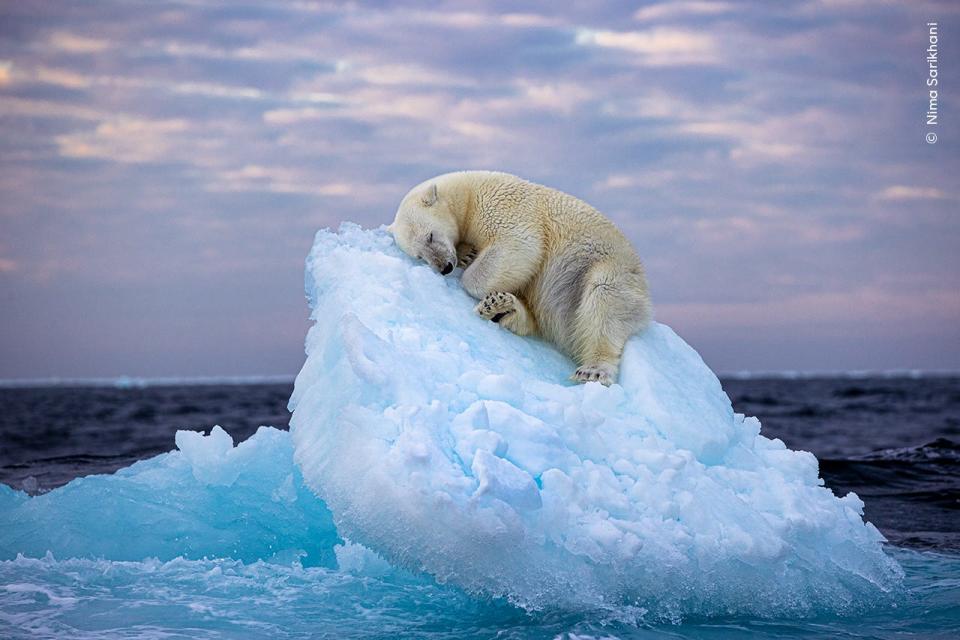

Polar bears, like us, sometimes mess with their bedding before falling asleep.
In this case, photographer Nima Sarikhani watched as this polar bear used its paws to carve out a corner in a small iceberg, making it an ideal place to doze.
Sarihani found this fussy sleeper in the water near the Spitsbergen archipelago in Norway.
Although the area is known as the “land of polar bears,” it took Sarihani three days and multiple course corrections on their research vessel to find any bears at all.
A neighbor dispute
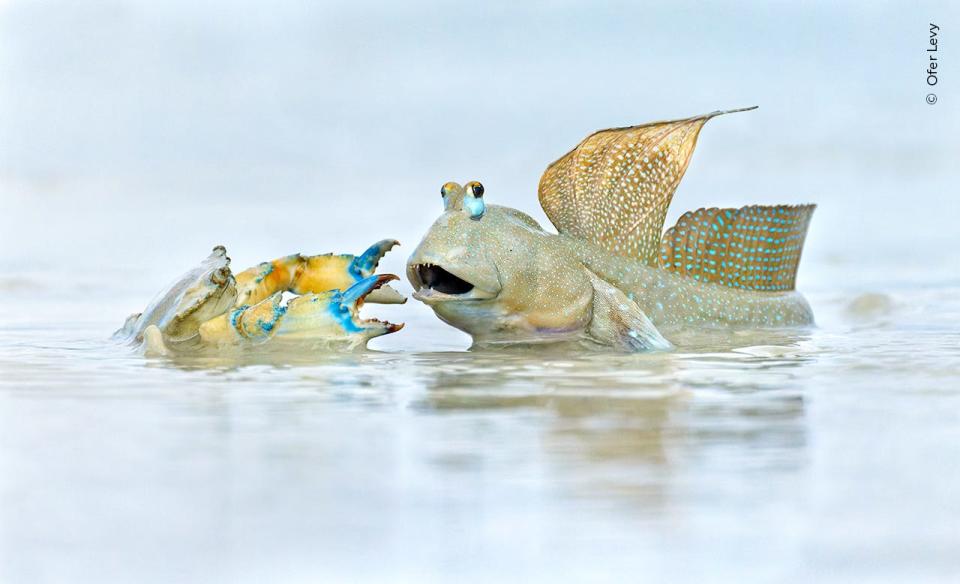

This funny-looking creature is no stranger to hardship: the mudskipper is a strong fish that can live both in and out of the water.
This particular fish was found by photographer Ofer Levy in Roebuck Bay, Australia, fending off an invading crab. Levy witnessed the fish repeatedly starting the brawl over his muddy kingdom.
“This crab is clearly committing a transgression, and by opening its mouth and raising its dorsal fin, the mudskipper challenges the intruder and attempts to deter it with a menacing display,” reads the official caption of the photo.
An elephant kicking through the trash to pick through it
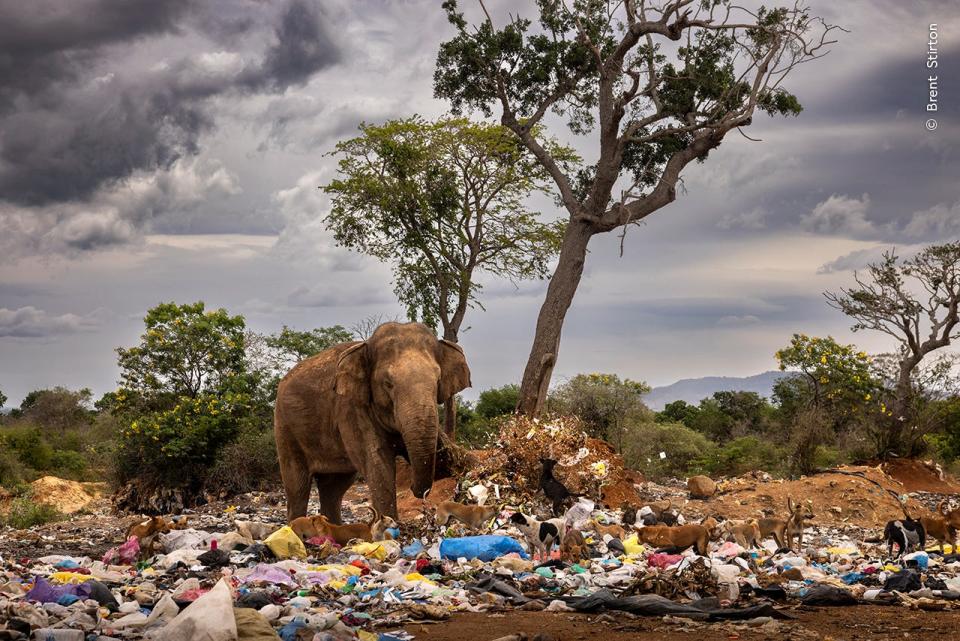

This photo captured an elephant foraging for food in a rubbish dump in Sri Lanka. As humans continue to encroach on elephant habitat, onlookers have witnessed more of this behavior, the caption said.
The scars on the elephant’s legs showed that the animal had been shot before, most likely by a farmer trying to prevent it from eating his crops.
So, the caption reads, this elephant is probably no stranger to foraging for food.
Lionesses show that it takes a village
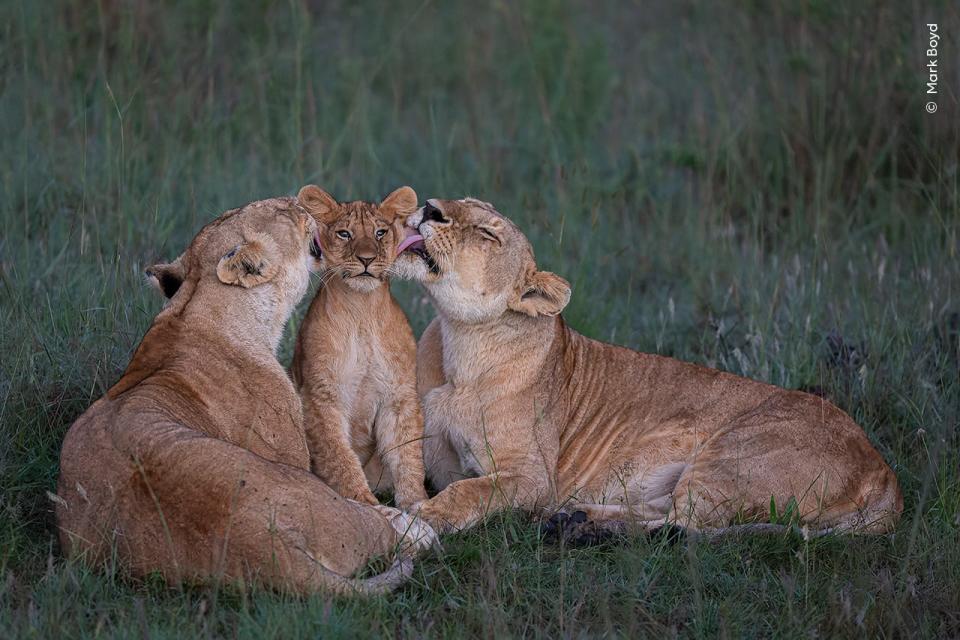

This photo shows two lionesses nursing a young cub in their care in the Masai Mara National Reserve in Kenya. The area is home to an estimated 850 to 900 lions.
“The youngster clearly enjoyed the moment of affection and attention,” the caption read.
Female lions raise their cubs indiscriminately, sharing the burdens of parenthood and keeping the cubs together in a nursery, a nursery.
Not only is this a heartwarming display of cooperation, but it can also help the cubs avoid being eaten. After all, there is safety in numbers.
A penguin who bothers his neighbors
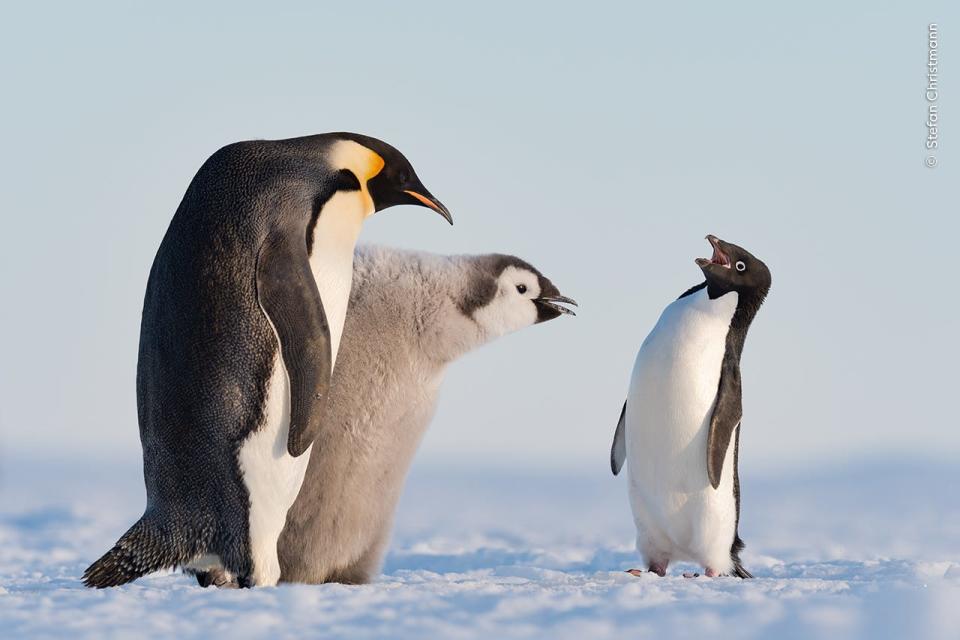

Adélie penguins are a known nuisance in Antarctica, according to the caption of this photo, entitled “Troublemaker”.
During certain seasons, you may encounter Adélies challenging other penguin species, such as emperors, to try to get them to drop their food.
So when photographer Stefan Christmann saw this Adélie approach an adult emperor and his chick, he paid special attention.
A hare floating above the snow
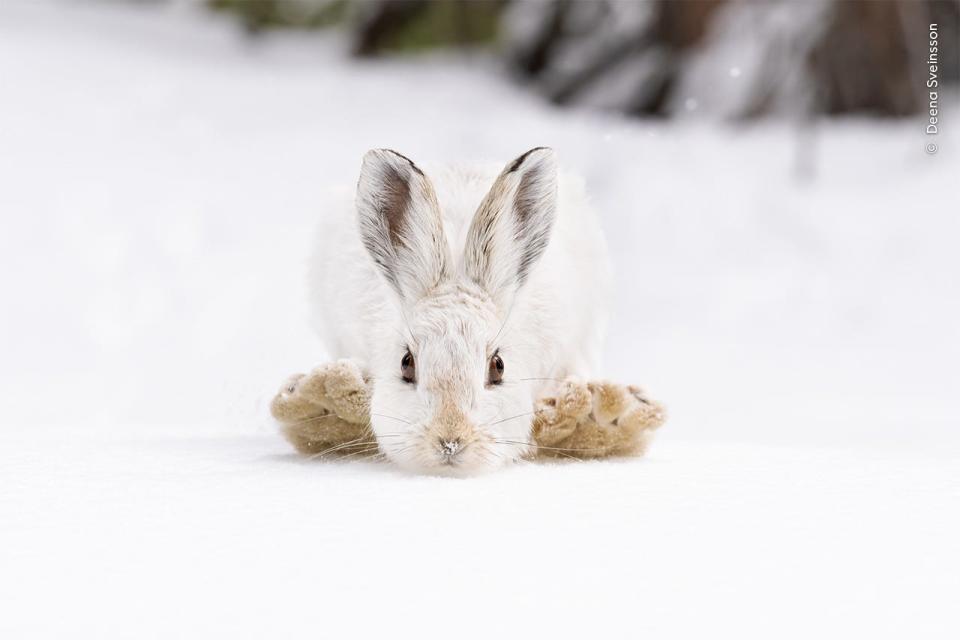

Photographer Deena Sveinsson waited hours for this sleeping snowshoe hare to wake from its slumber and captured the moment its paws touched the snow.
These large, flat feet act like snowshoes and help prevent the hare from sinking into the snow.
Sveinsson had to carry snowshoes himself to reach this point in Rocky Mountain National Park, aligning subject and photographer in the battle against the elements.
A fox negotiating with a shrew
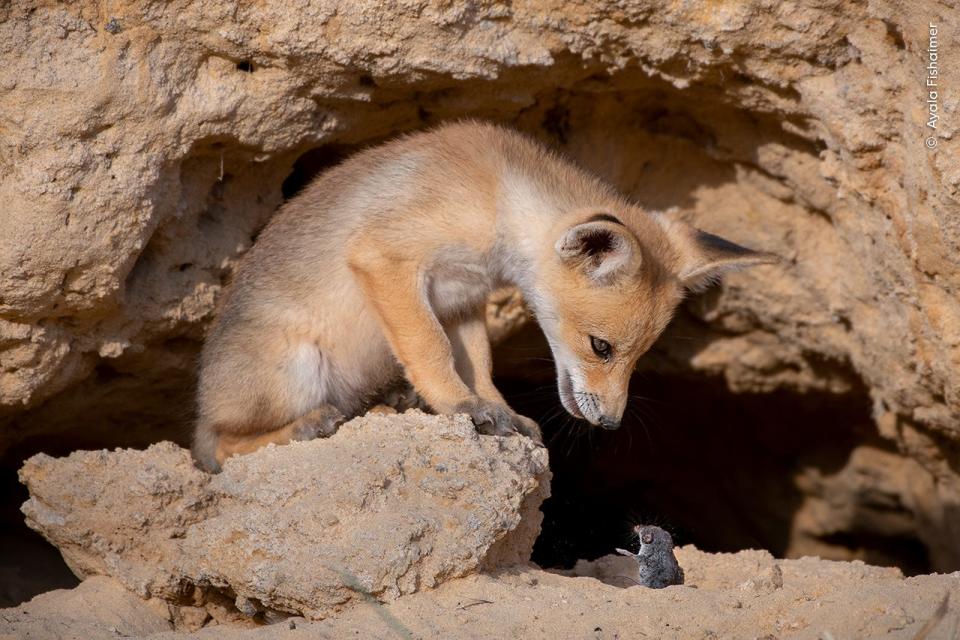

Like children, red foxes sometimes play with their food.
In this case, a fox cub in the foothills of Israel was caught staring at a shrew that it had just grabbed from the sand and thrown into the air.
Photographer Ayala Fishaimer captured this interaction on camera after tracking this cub and its three siblings.
Read the original article on Business Insider